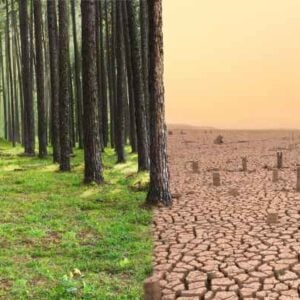As climate change impacts intensify, countries around the world are scaling up adaptation strategies to protect communities, ensure food security, and build long-term resilience. A cornerstone of these strategies is the use of nature-based solutions (NbS)—approaches that leverage natural ecosystems such as forests, wetlands, coastal habitats, and farmlands to reduce climate risks while maintaining essential services like clean air, water, pollination, and biodiversity. These solutions not only address adaptation needs but also contribute to mitigation efforts, positioning them as a key component of sustainable climate policy.
The growing inclusion of ecosystem-based adaptation (EbA) and NbS in National Adaptation Plans (NAPs) and Nationally Determined Contributions (NDCs) is helping countries better align their adaptation and mitigation goals. This alignment enhances policy coherence and unlocks access to climate finance, particularly through coordination with National Biodiversity Strategies and Action Plans (NBSAPs). While over 90 countries reference NbS in their NDCs, many have yet to make them a central part of their strategies. Nonetheless, momentum is building as more than 30 countries integrate NbS into third-generation NDCs through forest restoration, agroecology, watershed management, and urban greening.
As of 2024, 44 out of 57 countries with NAPs submitted to the UNFCCC have explicitly included nature-based or ecosystem-based approaches. Many of these plans identify priority sectors—like agriculture, biodiversity, or water resources—where locally tailored NbS can help manage specific climate risks. In Bhutan, for example, a carbon-negative nation, green infrastructure is being prioritized in the capital city of Thimphu. Through the Green Infrastructure and Open Spaces Masterplan, funded by the Green Climate Fund (GCF), Bhutan is integrating ecosystem-based designs into urban planning to reduce climate risks like flooding and landslides. A $20 million grant from the Global Environment Facility (GEF) is further supporting similar interventions in Thimphu and Paro.
In Senegal, agriculture—central to rural livelihoods and food security—is a top priority for NbS. Through the UNDP-FAO SCALA programme, composting and mulching have emerged as effective strategies to improve soil health, retain moisture, and reduce dependence on chemical fertilizers. These efforts are supported by national commitments to scale compost use and restore degraded lands. A GEF-funded initiative aims to restore over two million hectares in the Ferlo Biosphere Reserve and Plateau of Thies through climate-smart agriculture, agroforestry, and sustainable grazing practices.
Ethiopia, facing severe climate threats to water and agriculture, is using watershed-based planning to adapt livelihoods in vulnerable communities. The SCALA programme supports integrated water management efforts that combine traditional knowledge with ecological restoration techniques. In highland and lowland regions, thousands of hectares of degraded land have been rehabilitated through erosion control and improved irrigation. These efforts have boosted water retention and soil fertility, directly benefiting local farming communities.
In coastal Cuba, where rising sea levels and extreme weather threaten the majority of the population, the Mi Costa project is a flagship ecosystem-based adaptation initiative. Backed by the GCF and UNDP, it aims to restore over 11,000 hectares of mangroves and 3,000 hectares of swamp forest across seven provinces. These ecosystems act as natural barriers against storm surges and saltwater intrusion while enhancing biodiversity and carbon storage. The project’s success is rooted in strong community participation, with over 60% of local residents engaged in restoration and early warning training programs.
In Lao PDR, NbS are being integrated into flood management in areas highly vulnerable to extreme weather. In districts like Champhone, where thousands have been impacted by recent floods, ecosystem degradation has worsened the damage. With support from the GEF, the government and partners are restoring wetlands and building natural infrastructure like retention ponds and cascading weirs. These measures reduce flood intensity and restore natural water flows, helping safeguard communities while supporting ecological recovery.
Despite their multiple benefits, nature-based solutions remain significantly underfunded. In 2022, global investment in NbS stood at $200 billion—only one-third of the estimated annual requirement to meet climate and biodiversity goals by 2030. Bridging this gap will require blended finance approaches that combine public funds, private sector investment, and international climate finance. Successful examples, such as the Bhutan Climate Fund and Cuba’s integrated coastal zone financing model, show the potential of scaling NbS through strategic funding frameworks.
As countries continue to advance their NAPs under the Paris Agreement, nature-based solutions must be elevated beyond their current role as a supplementary option. Instead, they should be treated as a foundational pillar of climate adaptation and resilience, capable of delivering long-term environmental, social, and economic benefits across ecosystems and communities.







